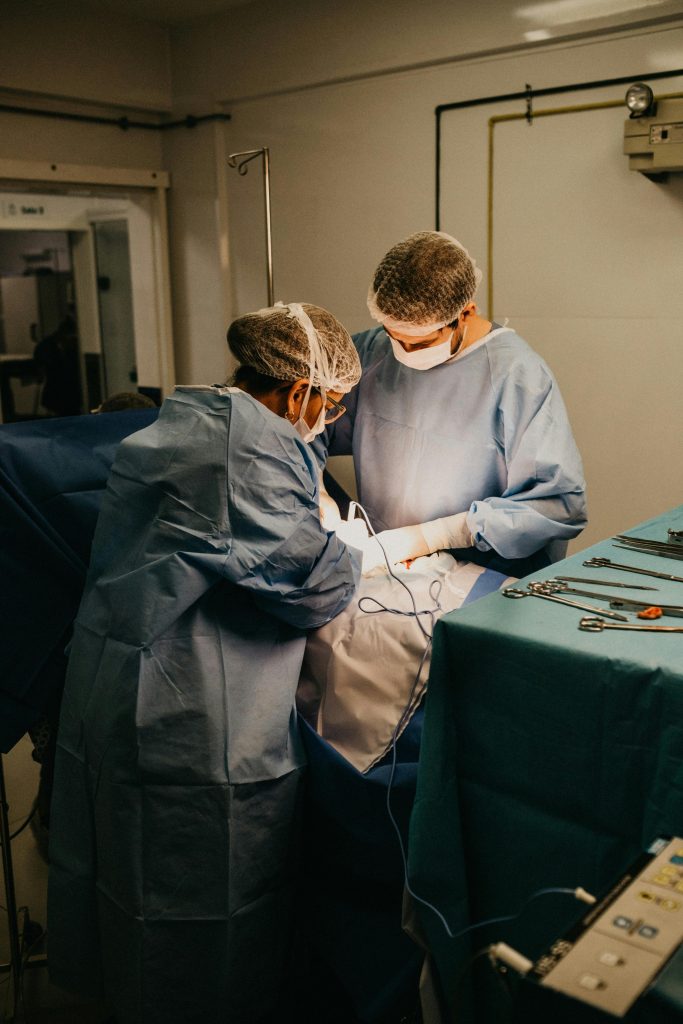Operating Rooms: A High Risk Environment
Operating rooms are environments with a high risk of sharps injuries due to the frequent use of needles, scalpels, and other sharp instruments during surgical procedures. Sharps injuries can happen anytime in the operating room. Studies show that a significant portion of healthcare worker sharps injuries occur in surgical settings.

Nurses on the Front Line
Workers in healthcare, especially nurses, are already reported as having one of the highest rates of work-related injuries. This risk of sharps injuries has long been a concern in healthcare, especially for nurses. The injuries can be serious, with potential for infection and emotional trauma. Let’s delve into the causes and consequences of sharps injuries for nurses, and exploring ways to prevent and reduce these incidents.
A Persistent Threat
Sharps injuries remain a prevalent and dangerous threat for nurses in the operating room. In the United States alone, the CDC reports a staggering 385,000 sharps injuries among hospital healthcare workers annually.
Causes
The main causes of sharp injuries in nurses include improper disposal of sharps, using sharps improperly, and being in close proximity to sharps during medical procedures. Research has identified several factors that contribute to sharps injuries in the OR, including:
-
- Passing sharps hand-to-hand: This practice should be avoided whenever possible. Safe sharps disposal containers should be readily available.
- Overfilled sharps containers: When sharps containers are full, it increases the risk of accidental sticks or cuts while trying to dispose of sharps.
- Not using safety devices: Sharps safety devices, such as the sterile BladeCASSETE Scalpel Blade Remover, or blunt suture needles, can significantly reduce the risk of injury.
- Time pressure and fatigue: The fast-paced environment of the OR can sometimes lead to a lapse in focus or adherence to safety protocols.
Consequences
Sharps injuries can have serious consequences for healthcare workers, including:
-
- Infection: Exposure to blood-borne pathogens like Hepatitis B (HBV), Hepatitis C (HCV), and Human Immunodeficiency Virus (HIV) through a sharps injury can lead to infection.
- Psychological Stress: The fear of contracting a serious illness can cause significant emotional distress for healthcare workers who experience a sharps injury.
- Lost Work Time: Investigating and managing a sharps injury can lead to lost work time for the healthcare worker and potentially other staff involved.
Prevention

Hospitals and facilities must implement and highlight particular steps and processes to educate their employees to minimize sharps injuries in the Operating Room. A great way is to introduce the Hierarchy of Controls as an effective method for managing hazards in the OR. The Hierarchy of Controls can be utilised to control the risk of sharps injuries among healthcare workers. It works with these strategies which can easily be implemented in the OR:
-
- Using sharps safety devices: Facilities should encourage the use of engineered safety devices with passive features.
- Safe sharps disposal practices: Certified sharps containers should be located conveniently and disposed of properly when full.
- Following established protocols: Strict adherence to established safety protocols for handling sharps instruments is crucial.
- Open communication: A culture of open communication should be encouraged, allowing staff to report near misses and discuss safety concerns without fear of reprisal.
Implementing sharps injury prevention measures isn’t just about protecting staff; it fosters a healthier environment for everyone. Healthcare organizations that go a step further and provide support to nurses who have experienced sharps injuries can further lessen the emotional and professional impact of these incidents. Safer workplaces lead to reduced stress and improved well-being for nurses, ultimately benefiting patient care as well.
References
- Association of Surgical Technologists – Preventing and Managing Sharps Injuries: https://www.ast.org/
- Centers for Disease Control and Prevention (CDC) – Sharps Safety: https://www.cdc.gov/infection-control/hcp/sharps-safety/index.html
- 2018 Survey of Occupational Injuries & Illnesses, U.S. Bureau of Labor Statistics, U.S. Department of Labor, November 2019. http://stats.bls.gov/iif/soii-charts-2018.pdf
- American College of Surgeons – Revised Statement on Sharps Safety: https://www.facs.org/about-acs/statements/sharps-safety/
- Sharps Safety for Healthcare Settings, Center for Disease Control and Prevention, USA. http://www.cdc.gov/sharpssafety/index.html

